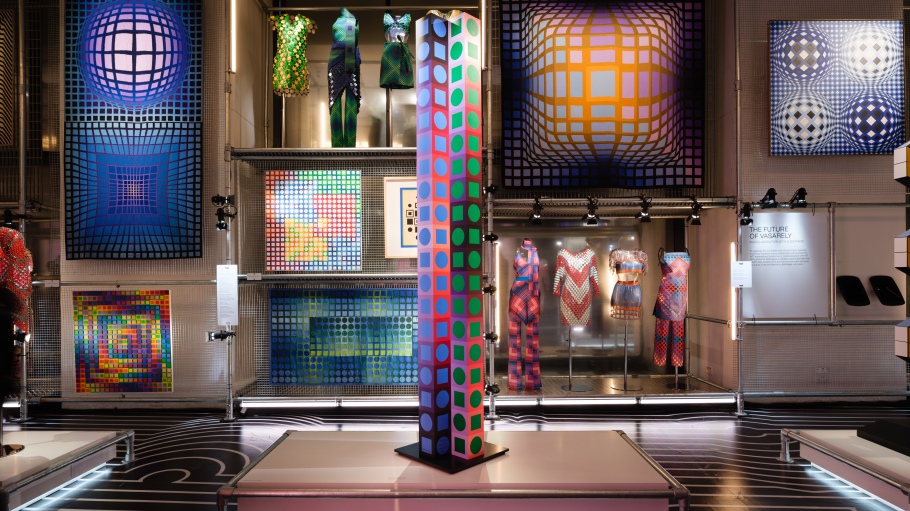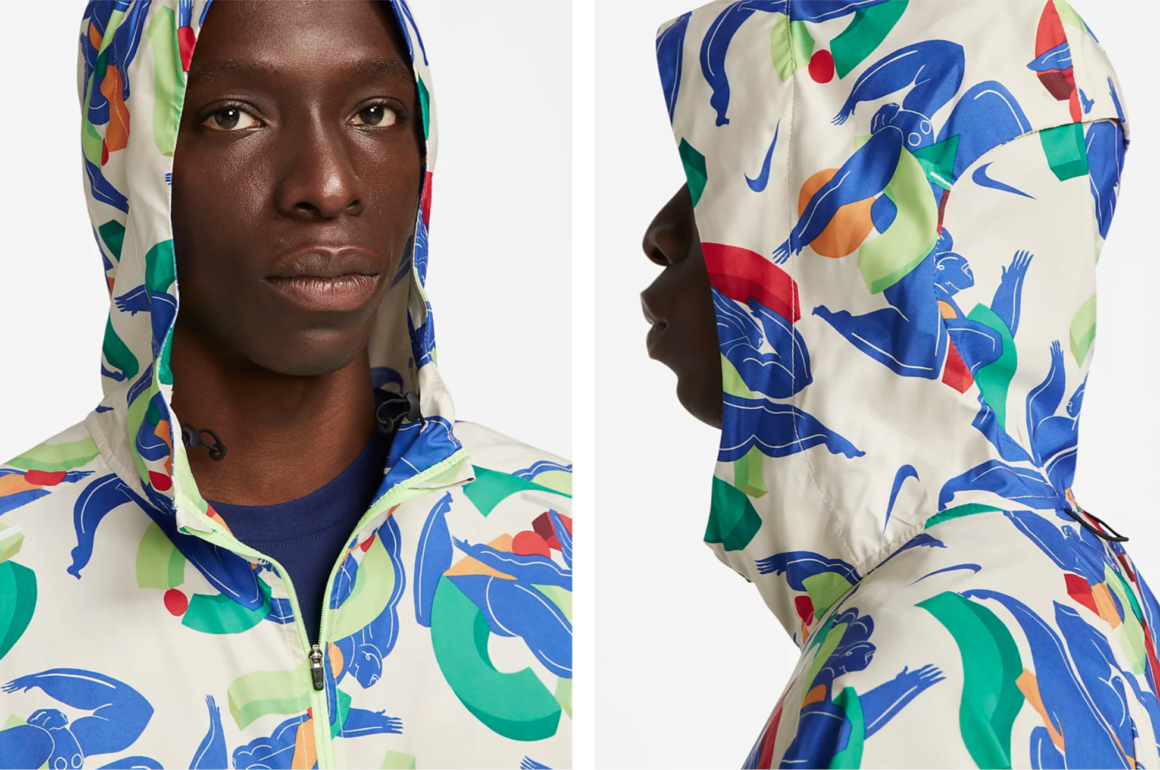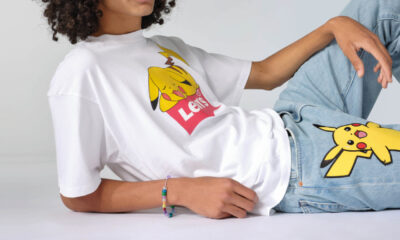CULTURE
SELFRIDGES IS SELLING NFTS IN STORE

Selfridges, a UK department store, is selling NFTs and digital fashion in its Oxford Street store in London, bringing digital goods to real-life shopping and expanding their accessibility in fashion.
The fusion of virtual and physical worlds will debut as part of a pop-up featuring artwork by Victor Vasarely and new physical pieces inspired by Victor Vasarely’s work from designer brand Paco Rabanne. The NFTs, which can be purchased using a traditional credit card through an in-store digital screen, will include digital versions of Paco Rabanne’s first dresses.
Between the 28th of January and the 12th of March, around 1,800 NFTs will be released, with prices ranging from £2,000 to more than £100,000; select Paco Rabanne NFTs will be sold alongside their physical counterparts, and the digital versions can be worn across multiple virtual platforms. Some pieces will be recreations of designs from the 1960s that were never produced. The funds raised will benefit the Fondation Vasarely Museum in Aix-en-Provence, which houses and restores works by the artist. When a customer purchases the NFT, the Substance automatically creates an NFT wallet for them, where the NFT is saved.
According to Attard, Selfridges’ project is likely to introduce new customers to the world of NFTs. “You only have the experience if you remove the words ‘NFT,’ ‘crypto,’ and ‘blockchain.’ “Even when you pay at a normal till, you have no idea how it works,” he says. According to Attard, the project also includes a virtual environment in the metaverse platform Decentraland where people can interact with patterns inspired by Vasarely, whose work feels contemporary today. Selfridges has been an early adopter of new technologies, including an October collaboration with emerging designer Charli Cohen, which included access to a virtual environment and multiple augmented reality installations.
According to Attard, Selfridges and Sebastian Manes, Selfridges’ executive buying and merchandising directors, were especially careful in understanding the opportunities in the space and developing a long-term strategy. “It’s critical to understand the space and what is possible in retail, as well as how NFTs transform the fashion experience.” Much of the work, he adds, consists in establishing an infrastructure that allows for ongoing experiences. “NFTs are more than just an eCommerce experience,” he says, adding that projects like this — which revive historic works and provide access to previously inaccessible goods and experiences, for example — demonstrate how NFTs can help showcase the culture and add more elements to fashion consumption.
CULTURE
NIKE’S NEW RECYCLED COLLECTION

“Move to Zero” is Nike’s new trainer range consisting of their most sustainable shoes to date. Produced by eco-friendly materials, such as recycled cork from the wine industry or bark that’s produced in a way that isn’t harmful to the tree, each pair are 20% recycled materials.
The soles of the trainers are an outcome of the Plant Cork Pack, a process that infused the cork into the rubber sole. This product release marks Nike’s air to become ‘zero carbon and zero waste’.
The collection includes both new and updated trainer designs; you can purchase the beloved Air Force 1 or Blazer Mild and Air Max alongside a new silhouette, Nike Crate Impact. Their Air VaporMax 2021 is one of their ‘most sustainable shoes to date’ as it’s produced by over 50% recycled resources.

The capsule is inspired by ‘the natural world’ but it isn’t just the sole’s that are eco-friendly, ‘Each shoe is dedicated to a plant we love and brought to life through embroidered botanical designs, scientific infographics and dye sourced from the plant itself.’ Dohnn Ball, on the Plant Cork Pack team, revealed further the inspiration behind the trainer designs, saying, ‘On each shoe we are highlighting a plant, and whatever colour that plant is processed into is the accent colour on that shoe”.

[Image Source: Nike]
CULTURE
JACK DANIELS X THE SHOE SURGEON: FINELY CRAFTED

Sneakerheads rejoice: now you can explore The Shoe Surgeon’s studio in interactive 3D, for a taste of where that custom sneaker magic happens. Finely Crafted shares the secrets of the latest Jack Daniels/Shoe Surgeon collab—and gives fans a chance to trip to Los Angeles to tour the studio for real.
Created by MediaMonks, a global creative production company that crafts amazing work for leading businesses and brands. Explore the space for yourself here.
CULTURE
BLUP50 KELLY ANNA LONDON X NIKE TO CREATE ‘RUN PAST THE FUTURE’

This artist in residence continues to blow out minds
After her trip to Nike’s head office in Portland in the US, to design her own running collection in collaboration with the team at Nike. ‘Run Past The Future’ is a menswear collection that has already been worn by the likes of singer Justin Timberlake and athlete Craig Engels.




-
FASHION3 months ago
NEW AIR JORDAN 36 DRIPPING WITH GOLD
-

 FASHION3 months ago
FASHION3 months agoFIRST LOOK AT POKÉMON X LEVI’S NEW COLLECTION
-
CULTURE3 months ago
GUCCI X BALENCIAGA’S HACKER PROJECT HAS DROPPED
-
ENTERTAINMENT3 months ago
NETFLIX IS PLANNING A LA CASA DE PAPEL (MONEY HIGHEST) SPINOFF BASED ON BERLIN’S CHARACTER
-
CULTURE3 months ago
A$AP ROCKY LOOKS BACK AT HIS BEST AND WORST FASHION MOMENTS
-
FASHION3 months ago
YEEZY SEASON 9 REVEALED – WITH A STATEMENT FROM YE
-

 FASHION3 months ago
FASHION3 months agoSUPREME RELEASES AN AIRSTREAM FOR ITS SS2022 COLLECTION
-
FASHION3 months ago
IVY PARK RODEO: FOURTH COLLECTION WITH BEYONCÉ
